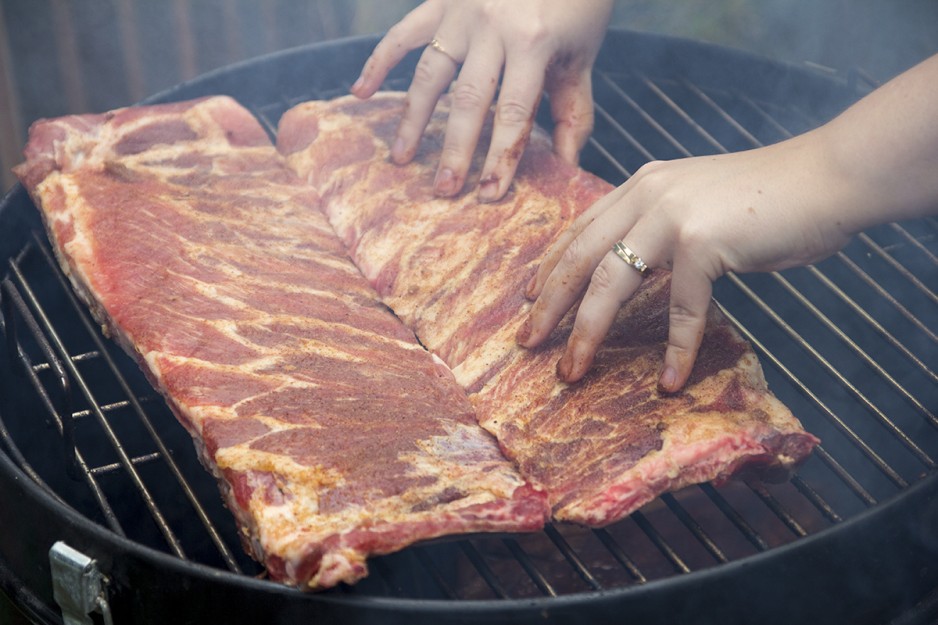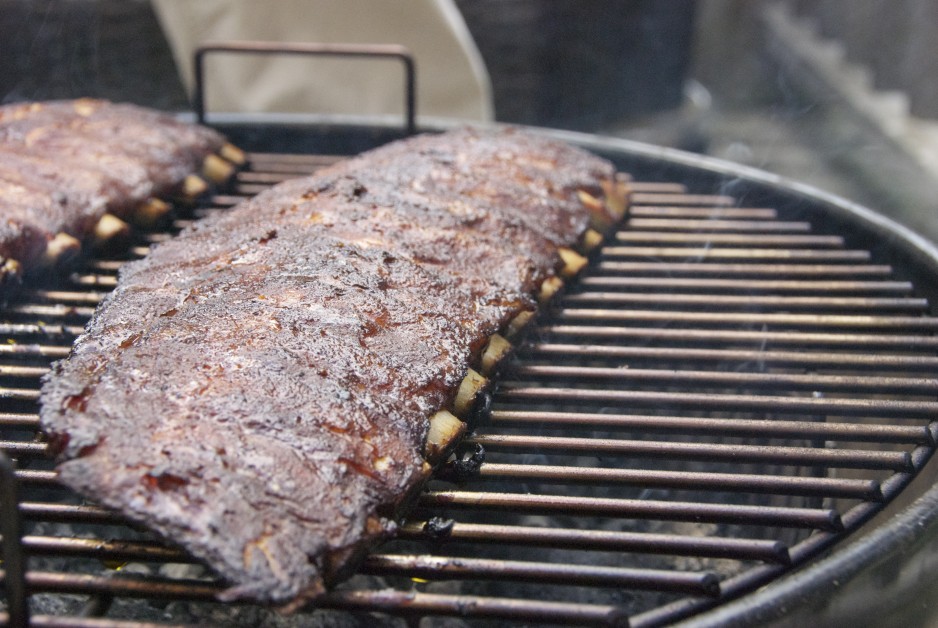
Back Ribs Vs. Spare Ribs - What's the Difference?
Ribs are ribs right? Wrong. Pork ribs come from two places on the pig. This article is going to explore them and the benefits of each. Learn how to save money when purchasing ribs, and how to get your hands the best so you can host a perfect backyard barbecue. All ribs may not be created equal, but you’re going to be bustin’ a rib when you realize that it really isn’t that complicated. So, Back Ribs vs. Spareribs – what is the difference?
Tickle Those Ribs
There are two main types of pork ribs that you can purchase. Spareribs and Back Ribs. They come from two different places on the pig.
Spareribs:
Meatier than the Back Rib, Spareribs – also known as side ribs - are thick, juicy, and come from the belly section of the pig (where bacon comes from). They usually come with the sternum, costal cartilage and flap still attached. From the Sparerib you can get St. Louis style or Louisiana style ribs. These are more like what you see at restaurants and in competitions. The breastbone and cartilage have been trimmed from the top of the ribs, the flap has been removed from the back, and the meat has been trimmed up so that the ribs have a uniform-rectangular shape.
Back Ribs:
These can sometimes be called Loin Ribs, or Baby Backs. Back Ribs come from the back of the pig, along the spine, close to the area where pork chops come from. They’re not as meaty or fatty as Spare Ribs, however what they lack in fat and meat, Back Ribs more than make up for it with tenderness and better marketing. These are a high demand cut, which drives up the price. The biggest benefit to buying Back Ribs is that they cook faster than Spareribs so you can get to your bone pickin’ and finger lickin’ faster.
The best place to get good ribs, be they Sparerib or Back Rib, is the butcher.
The Road to Ribs
The best place to get good ribs, be they Sparerib or Back Rib, is the butcher. You can see what they have on hand, and preferably not previously frozen. A butcher can help you trim the ribs, remove the silver skin from the back, and make recommendations on how to prepare them. If you can’t get to a local butcher, you can go to the meat counter of your high-end grocery store. Any grocer with a butcher counter can provide you with service similar to the local butcher. Prices for both of these avenues will be moderate to expensive depending on the price of pork per pound at the time. For meat wholesalers, check your local listings. It should be relatively easy to find one. Just call and place an order to be picked up in a day or two. Ideal when you are feeding a crowd, though you will be encouraged to get at least a whole case – about six or more racks of ribs.
The least expensive way to purchase ribs is out of the meat section in your local grocer or bulk food store. The ribs found here are generally in a cryopack – thick vacuum packed plastic. You need to be aware of what you’re looking for in a rib rack, and read the labels. Many cryopack racks can contain meat that has been “enhanced”. This means that your ribs have been injected with a salt-water solution that can throw off the flavor, making them too salty. These ribs can also be misleading or mislabeled. You think you’re getting some great Back Ribs and wind up with a huge rack of Spareribs – not that this is a bad thing.
Put That Rib Back
It doesn’t matter if you’re looking for Back Ribs, Spareribs, or any variation of those cuts, you want to look for the following to ensure that you get the most for your money when purchasing ribs.
- Linger, look, and get advice on ribs from your butcher.
- Check ribs for meatiness, you want ribs that will satisfy, not leave you wanting more.
- You want marbling. Great striations of fat that run alongside the bone will provide flavor and keep the meat moist while you cook.
- Avoid any meat that isn’t healthy and pink. Dry looking, or greyish meat is bad.
- Smell the package, if you can smell the meat through the package, put it down.
- Avoid shiners. That’s when the bones break through the meat on the front or back.
- Do get racks that have 11 to 14 bones in them, they’re easier to share.
Whether you are purchasing back or spareribs, make sure to have at least a half rack per person for a full meal, or 3 ribs per person for an appetizer.
Ribs to Spare
Back or Spareribs, when you are shopping for ribs, make sure to have at least a half rack per person for a full meal, or 3 ribs per person for an appetizer. Also, did you know the worst kept secret in the grilling world? Get the most bang for your buck when it comes to making ribs if you purchase untrimmed Spareribs and trim them yourself. In doing this, you get loads of extra meat and fat that can be put to good use. Use the fat for flavoring in sausage. Use that breastbone section to flavor those baked beans, and use the flap and skinny bit at the end of the rack to make yourself some delicious rib tips. Remember Spareribs are basically bone-in bacon.
Braise the Roof
Ribs are an art form for many-a pit master. Aside from boiling, there is really no wrong way to cook them. Bake, roast, or braise your ribs low and slow, 250°F to 300°F for three to five hours, then hit them with some direct heat to sear and caramelize the sauce, but beware of burning that sugar.
Smoking ribs can be easy too. Rub them well, smoke them for 3 hours over indirect heat at about 225°F. Wrap them in foil, add some cider or other liquid, and continue to cook for another 2 hours. Finally unwrap them and cook one more hour with or without a healthy helping of sauce.
We’ve got loads of Rib Recipes on our blog to help you cook up the best ribs you have ever made. If these recipes don’t tickle your ribs, share your favorite recipes on our social pages like Facebook and Instagram.
Happy Grilling!




